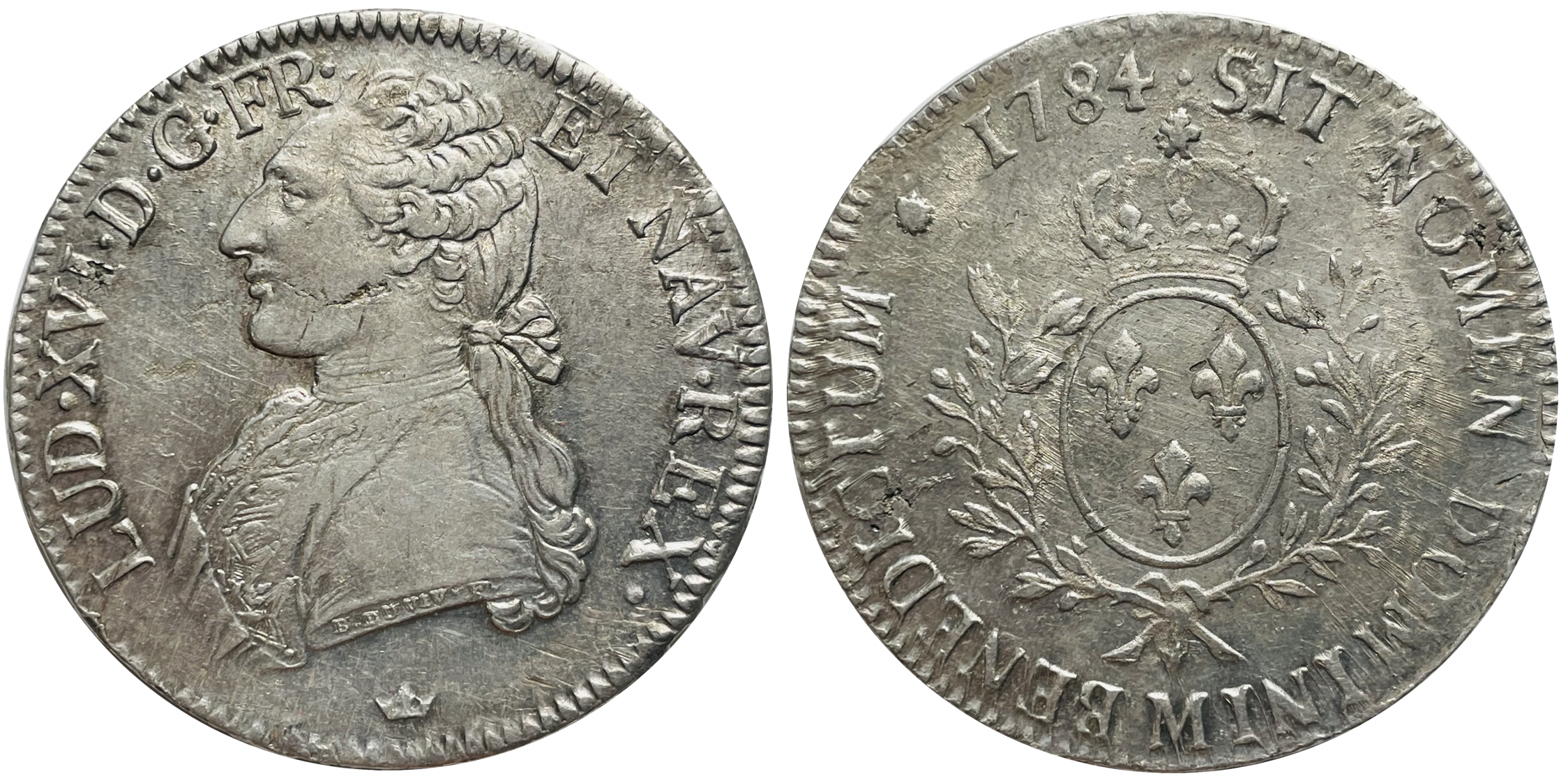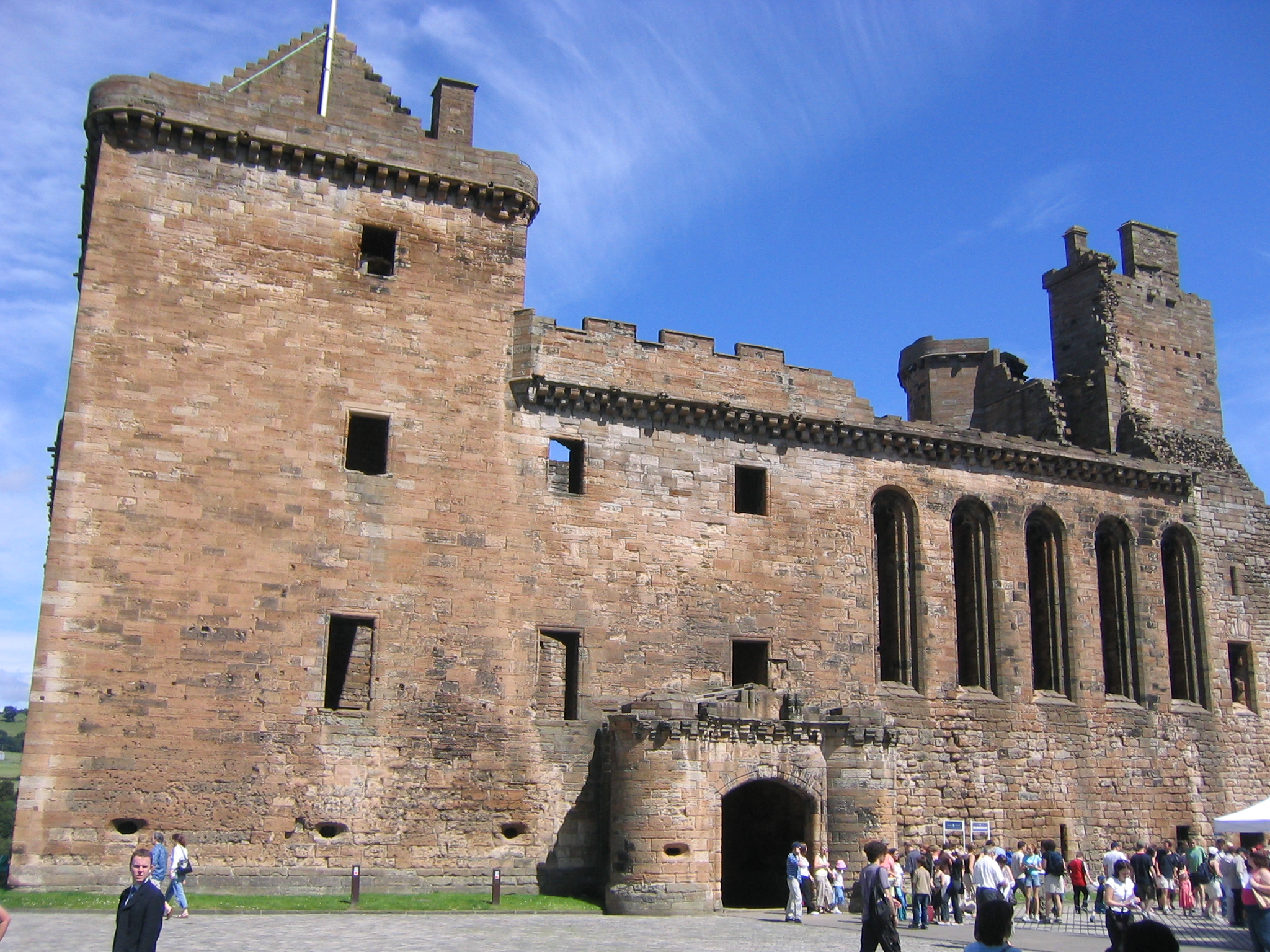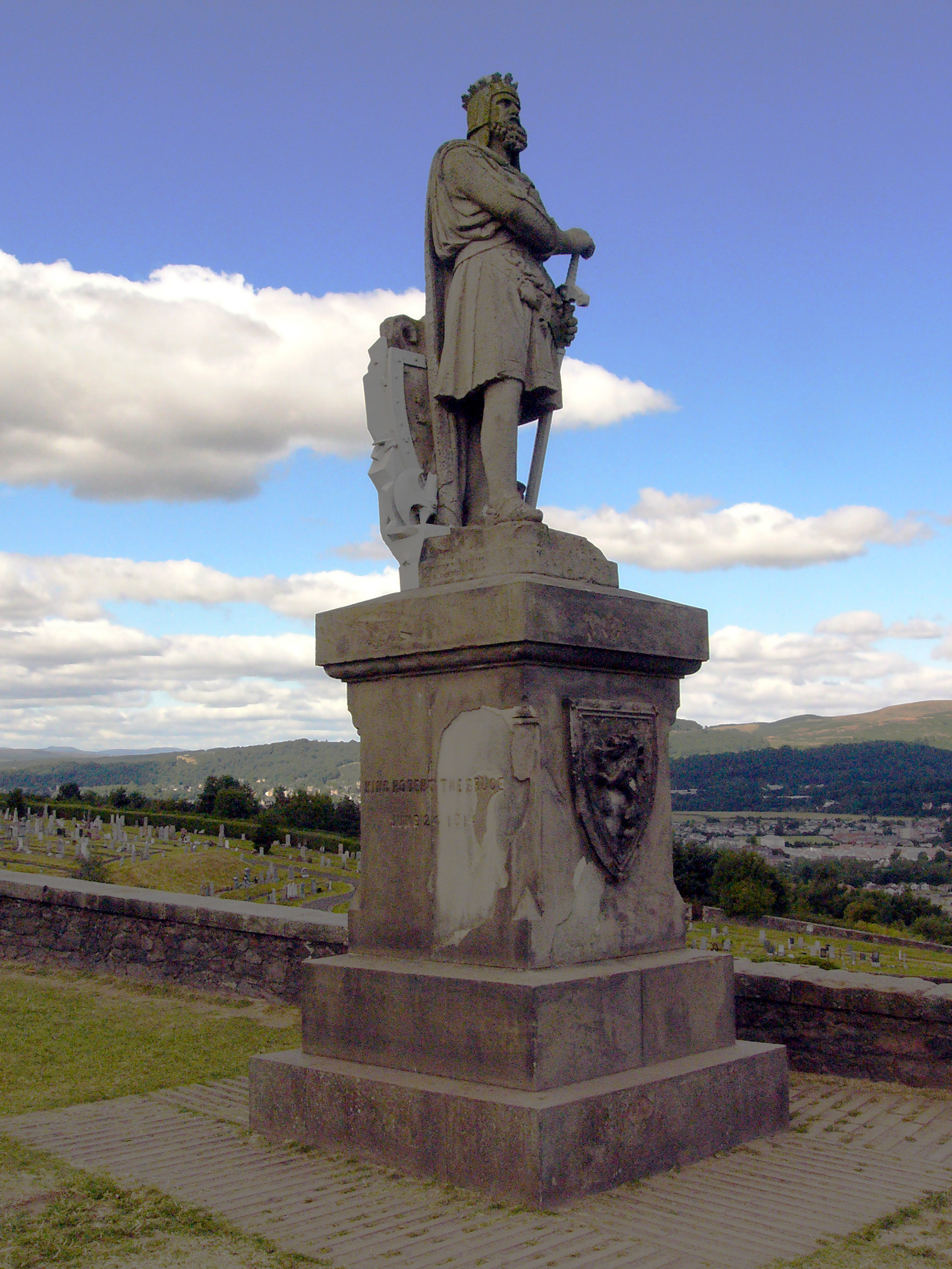|
John Mosman (apothecary)
John Mosman was an apothecary at the Scottish court. Mosman worked for the households of James IV of Scotland and the queen consort Margaret Tudor supplying medicines and spices, herbal remedies, and providing treatments. Family background Other members of the family were goldsmiths, including John Mosman who worked for James V and his son James Mosman, who built the house in Edinburgh known as the " John Knox House". It has been suggested that the Mosman family was of Jewish origin. A branch of the family including a John Mosman and his son Robert Mosman was recorded in February 1490 in connection with their tenancy of the lands of "Easter Gledstanis". Career Mosman received a regular fee of £10 from the royal treasurer by 1513. A copy of a household roll of the Scottish court made around 1507 names him and William Foular as the court "pottingaris". "Pottingar" is an old Scots language word for apothecary. Royal wedding In April 1503 Mosman was sent to Flanders to buy mate ... [...More Info...] [...Related Items...] OR: [Wikipedia] [Google] [Baidu] |
Apothecary
''Apothecary'' () is an Early Modern English, archaic English term for a medicine, medical professional who formulates and dispenses ''materia medica'' (medicine) to physicians, surgeons and patients. The modern terms ''pharmacist'' and, in British English, ''chemist'' have taken over this role. In some languages and regions, terms similar to "apothecary" have survived and denote modern pharmacies or pharmacists. Apothecaries' investigation of Herbal medicine, herbal and chemical ingredients was a precursor to the modern sciences of chemistry and pharmacology. In addition to dispensing herbs and medicine, apothecaries offered general medical advice and a range of services that are now performed by other specialist practitioners, such as surgeons and Obstetrics and gynaecology, obstetricians. Apothecary shops sold ingredients and the medicines they prepared wholesale to other medical practitioners, as well as dispensing them to patients. In 17th-century England, they also contro ... [...More Info...] [...Related Items...] OR: [Wikipedia] [Google] [Baidu] |
Richard Oram
Professor Richard D. Oram F.S.A. (Scot.) is a Scottish historian. He is a professor of medieval and environmental history at the University of Stirling. He is also the director of the Centre for Environmental History and Policy at the University of Stirling. In 1983, he received his MA in Mediaeval History with Archaeology at the University of St. Andrews, where he also carried out his doctoral research, on medieval Galloway. He joined the University of Stirling in September 2002, having previously been an honorary lecturer in history at the University of Aberdeen. In 2000 he published ''The Lordship of Galloway'' ( Birlinn). He has since written three royal biographies: two of King David I of Scotland David I or Dauíd mac Maíl Choluim (Scottish Gaelic, Modern Gaelic: ''Daibhidh I mac haoilChaluim''; – 24 May 1153) was a 12th century ruler and saint who was David I as Prince of the Cumbrians, Prince of the Cumbrians from 1113 to 112 ... ( Tempus, 2004; John Donal ... [...More Info...] [...Related Items...] OR: [Wikipedia] [Google] [Baidu] |
Andrew Aytoun
Andrew Aytoun (died 1547), was a Scottish soldier and engineer, and captain of Stirling Castle. Aytoun worked for James IV of Scotland, whose reign lasted from 1488 until his death at the battle of Flodden in 1513. He was regarded as a member of the king's household and bought livery clothes in " Rissilis" black. Career He was Chamberlain of the royal estates in Stirlingshire and Strathearn. He was appointed Baillie of Stirlingshire and Keeper of Stirling Castle in February 1501. He was also given a tack of lands at Inveralloun and the West part of Tillicoultry. From 1497 to 1508 he was master of building work at Stirling Castle, receiving £1,180 Scots in March 1505, and £445 in August 1506 with another £60 for hauling timber in October. The "King's Old Building" at Stirling Castle was completed by Walter Merlioun. The fore-work or gateway was also built at this time, by master masons John Lockhart and John Yorkstone, who managed their own budgets. Lockhart was a valued serva ... [...More Info...] [...Related Items...] OR: [Wikipedia] [Google] [Baidu] |
Écu
The term ''écu'' () may refer to one of several France, French coins. The first ''écu'' was a gold coin (the ''écu d'or'') minted during the reign of Louis IX of France, in 1266. The value of the ''écu'' varied considerably over time, and silver coins (known as ''écu d'argent'') were also introduced. ''Écu'' (from Latin ''scutum'') means shield, and the coin was so called because its design included the coat of arms of France. The word is related to the Catalan language, Catalan ''escut'', Italian language, Italian ''scudo (other), scudo,'' or Portuguese language, Portuguese and Castilian language, Castilian ''escudo''. In English, the ''écu'' was often referred to as the crown, or the French crown in the eras of the crown (English coin), English crown, crown (British coin), British crown, and crown (currency), other crowns. History Origin When Louis IX took the throne, France still used small silver French denier, deniers (abbreviated ''d''.), which had circula ... [...More Info...] [...Related Items...] OR: [Wikipedia] [Google] [Baidu] |
Alchemist
Alchemy (from the Arabic word , ) is an ancient branch of natural philosophy, a philosophical and protoscientific tradition that was historically practised in China, India, the Muslim world, and Europe. In its Western form, alchemy is first attested in a number of pseudepigraphical texts written in Greco-Roman Egypt during the first few centuries AD.. Greek-speaking alchemists often referred to their craft as "the Art" (τέχνη) or "Knowledge" (ἐπιστήμη), and it was often characterised as mystic (μυστική), sacred (ἱɛρά), or divine (θɛíα). Alchemists attempted to purify, mature, and perfect certain materials. Common aims were chrysopoeia, the transmutation of " base metals" (e.g., lead) into "noble metals" (particularly gold); the creation of an elixir of immortality; and the creation of panaceas able to cure any disease. The perfection of the human body and soul was thought to result from the alchemical ''magnum opus'' ("Great Work"). The co ... [...More Info...] [...Related Items...] OR: [Wikipedia] [Google] [Baidu] |
Norman Macdougall
Norman Macdougall is a Scottish historian who is known for writing about Scottish crown politics. He was a senior lecturer in Scottish history at the University of St Andrews. Macdougall has written biographies of the kings James III of Scotland and James IV of Scotland. He was also responsible for editing a biography of James V of Scotland James V (10 April 1512 – 14 December 1542) was List of Scottish monarchs, King of Scotland from 9 September 1513 until his death in 1542. He was crowned on 21 September 1513 at the age of seventeen months. James was the son of King James IV a .... Other publications include a work on the Auld Alliance, and editing ''Scotland and War'', to which he also contributed an article on ''James IV's Great Michael''. See also * Hamish Scott * Katie Stevenson References External links List of publications 21st-century Scottish historians Academics of the University of St Andrews Living people Year of birth missing (living pe ... [...More Info...] [...Related Items...] OR: [Wikipedia] [Google] [Baidu] |
Aether (classical Element)
According to ancient and History of science in the Middle Ages, medieval science, aether (, alternative spellings include ''æther'', ''aither'', and ''ether''), also known as the fifth element or quintessence, is the material that fills the region of the universe beyond the Sublunary sphere, terrestrial sphere. The concept of aether was used in several theories to explain several natural phenomena, such as the propagation of light and gravity. In the late 19th century, physicists postulated that aether permeated space, providing a medium through which light could travel in a vacuum, but evidence for the presence of such a medium was not found in the Michelson–Morley experiment, and this result has been interpreted to mean that no luminiferous aether exists. Mythological origins The word (''aithḗr'') in Homeric Greek means "pure, fresh air" or "clear sky". In Greek mythology, it was thought to be the pure essence that the gods breathed, filling the space where they lived, an ... [...More Info...] [...Related Items...] OR: [Wikipedia] [Google] [Baidu] |
Linlithgow Palace
The ruins of Linlithgow Palace are located in the town of Linlithgow, West Lothian, Scotland, west of Edinburgh. The palace was one of the principal residences of the monarchs of Kingdom of Scotland, Scotland in the 15th and 16th centuries. Although maintained after Scotland's monarchs left for England in 1603, the palace was little used, and was burned out in 1746. It is now a visitor attraction in the care of Historic Environment Scotland. Origins A royal manor existed on the site from the 12th century. This was later enclosed by a timber palisade and outer fosse to create a fortification known as 'the Peel', built in 1301/2 by occupying English forces under Edward I of England, Edward I. The site of the manor made it an ideal military base for securing the supply routes between Edinburgh Castle and Stirling Castle. The English fort was begun in March 1302 under the supervision of two priests, Richard de Wynepol and Henry de Graundeston, to the designs of Master ... [...More Info...] [...Related Items...] OR: [Wikipedia] [Google] [Baidu] |
Civet
A civet () is a small, lean, mostly nocturnal mammal native to tropical Asia and Africa, especially the tropical forests. The term ''civet'' applies to over a dozen different species, mostly from the family Viverridae. Most of the species's diversity is found in southeast Asia. Civets do not form a monophyletic group, as they consist only of certain members of the Viverridae and Eupleridae. The African civet, ''Civettictis civetta'', has historically been the main species from which a musky scent used in perfumery, also referred to as " civet", was obtained. Naming The common name is used for a variety of carnivoran mammal species, mostly of the family Viverridae. It is also used to refer to the African palm civet and the Malagasy civet. The African palm civet (''Nandinia binotata'') is genetically distinct and belongs in its own monotypic family, Nandiniidae. The Malagasy civet (''Fossa fossana'') belongs to a separate family Eupleridae, with other carnivorans of Mad ... [...More Info...] [...Related Items...] OR: [Wikipedia] [Google] [Baidu] |
Stirling Castle
Stirling Castle, located in Stirling, is one of the largest and most historically and architecturally important castles in Scotland. The castle sits atop an Intrusive rock, intrusive Crag and tail, crag, which forms part of the Stirling Sill geological formation. It is surrounded on three sides by steep cliffs, giving it a strong defensive position. Its strategic location, guarding what was, until the 1890s, the lowest bridging point, farthest downstream crossing of the River Forth, has made it an important fortification in the region from the earliest times. Most of the principal buildings of the castle date from the fifteenth and sixteenth centuries. A few structures remain from the fourteenth century, while the outer defences fronting the town date from the early eighteenth century. Before the union with England, Stirling Castle was also one of the most used of the many Scottish royal residences, very much a palace as well as a fortress. Several List of Scottish monarchs, Sc ... [...More Info...] [...Related Items...] OR: [Wikipedia] [Google] [Baidu] |
Alexander Elphinstone, 1st Lord Elphinstone
Alexander Elphinstone, 1st Lord Elphinstone (died 9 September 1513) was a Scottish Peerage, peer. He was the son of Sir John Elphinstone of that ilk and of Pittendreich. Courtier and administrator He was first known as "Alexander Elphinstone of Innernochty". As a courtier, in 1508 Elphinstone was recorded as a "squire of attendance". He was made Baillie or Chamberlain of Stirlingshire in January 1508, in succession to Andrew Aytoun. He also became keeper of Stirling Castle, a position held jointly with his wife, Elizabeth Barlay. They supervised some repairs and building work. Elphinstone was made a Lord of Parliament at the baptism of Prince Arthur, a son of James IV and Margaret Tudor in 1509. He was raised to the Peerage of Scotland as Lord Elphinstone, of Elphinstone in the County of Stirling, in 1510. This was a new creation. On the lands of the new barony of Elphinstone a new tower was erected called the Elphinstone Tower, Falkirk, tower of Elphinstone, which became the pri ... [...More Info...] [...Related Items...] OR: [Wikipedia] [Google] [Baidu] |
Elizabeth Barlay
Elizabeth Barlay or Barlow (died 1518) was an English lady in waiting to Margaret Tudor the wife of James IV of Scotland. Background Details of her English family are obscure. She may have been a daughter of John Barlow and Christian Berlay, or their relative. An 18th-century genealogical manuscript claimed that she was a sister of the bishop William Barlow and the explorer Roger Barlow. Some members of the Barlow family were involved in the rebellion of Perkin Warbeck. Despite this, she found a place at court and joined the household of Margaret Tudor in England in March 1503. The Barlow genealogical manuscript says this was due to the patronage of Margaret Neville, Countess of Oxford. At court in England and Scotland In England, as a member of the Queen of Scots' retinue, she was given chamlet silk for a gown. In June 1503 she was given a gown of tawny chamlet edged with black velvet, and a kirtle of black wool worsted lined with linen and wool cloth, and linen for smocks and ... [...More Info...] [...Related Items...] OR: [Wikipedia] [Google] [Baidu] |








